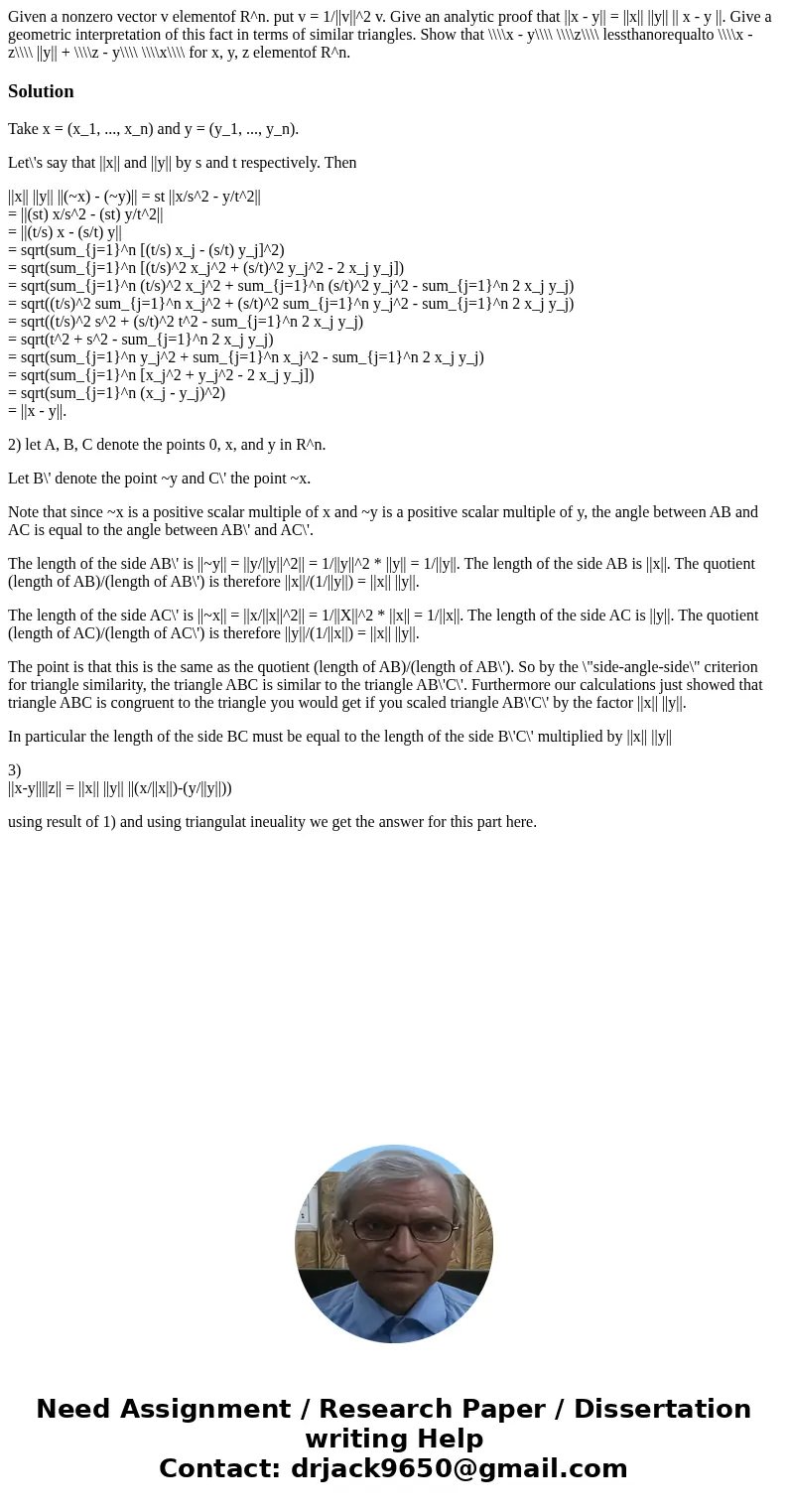Given a nonzero vector v elementof Rn put v 1v2 v Give an a
Solution
Take x = (x_1, ..., x_n) and y = (y_1, ..., y_n).
Let\'s say that ||x|| and ||y|| by s and t respectively. Then
||x|| ||y|| ||(~x) - (~y)|| = st ||x/s^2 - y/t^2||
= ||(st) x/s^2 - (st) y/t^2||
= ||(t/s) x - (s/t) y||
= sqrt(sum_{j=1}^n [(t/s) x_j - (s/t) y_j]^2)
= sqrt(sum_{j=1}^n [(t/s)^2 x_j^2 + (s/t)^2 y_j^2 - 2 x_j y_j])
= sqrt(sum_{j=1}^n (t/s)^2 x_j^2 + sum_{j=1}^n (s/t)^2 y_j^2 - sum_{j=1}^n 2 x_j y_j)
= sqrt((t/s)^2 sum_{j=1}^n x_j^2 + (s/t)^2 sum_{j=1}^n y_j^2 - sum_{j=1}^n 2 x_j y_j)
= sqrt((t/s)^2 s^2 + (s/t)^2 t^2 - sum_{j=1}^n 2 x_j y_j)
= sqrt(t^2 + s^2 - sum_{j=1}^n 2 x_j y_j)
= sqrt(sum_{j=1}^n y_j^2 + sum_{j=1}^n x_j^2 - sum_{j=1}^n 2 x_j y_j)
= sqrt(sum_{j=1}^n [x_j^2 + y_j^2 - 2 x_j y_j])
= sqrt(sum_{j=1}^n (x_j - y_j)^2)
= ||x - y||.
2) let A, B, C denote the points 0, x, and y in R^n.
Let B\' denote the point ~y and C\' the point ~x.
Note that since ~x is a positive scalar multiple of x and ~y is a positive scalar multiple of y, the angle between AB and AC is equal to the angle between AB\' and AC\'.
The length of the side AB\' is ||~y|| = ||y/||y||^2|| = 1/||y||^2 * ||y|| = 1/||y||. The length of the side AB is ||x||. The quotient (length of AB)/(length of AB\') is therefore ||x||/(1/||y||) = ||x|| ||y||.
The length of the side AC\' is ||~x|| = ||x/||x||^2|| = 1/||X||^2 * ||x|| = 1/||x||. The length of the side AC is ||y||. The quotient (length of AC)/(length of AC\') is therefore ||y||/(1/||x||) = ||x|| ||y||.
The point is that this is the same as the quotient (length of AB)/(length of AB\'). So by the \"side-angle-side\" criterion for triangle similarity, the triangle ABC is similar to the triangle AB\'C\'. Furthermore our calculations just showed that triangle ABC is congruent to the triangle you would get if you scaled triangle AB\'C\' by the factor ||x|| ||y||.
In particular the length of the side BC must be equal to the length of the side B\'C\' multiplied by ||x|| ||y||
3)
||x-y||||z|| = ||x|| ||y|| ||(x/||x||)-(y/||y||))
using result of 1) and using triangulat ineuality we get the answer for this part here.

 Homework Sourse
Homework Sourse